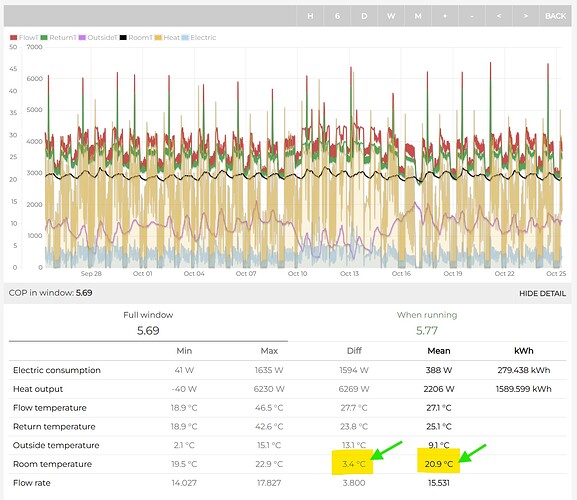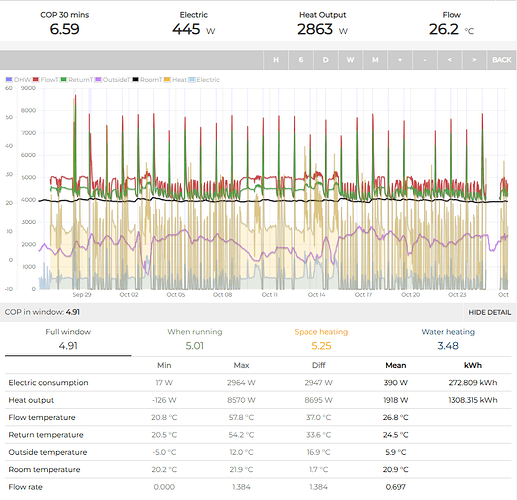Hi All,
Context
Whatever your heating source is, and assuming that the systems runs as efficiently as it can, what next? Comfort! Comfort (perceived temperature) is perhaps one of the ultimate goals for a system that’s already efficient. You could also say that ultimate efficiency is achieved if the comfort is achieved, because it means you’re only producing as much energy as you need, no less and no more.
New emoncms metric - comfort score
Please correct me if I’m wrong, however, I couldn’t see this metric yet mentioned or offered as a way to filter data on HPM website or directly on emoncms dashboards.
Comfort score
This is perhaps something to discuss, but I thought that the comfort score could be a % of total time where the current indoor temperature is within, let’s say 1 C degrees of the target temperature.
For example, a comfort score (over the selected period of time) of 90% indicates that the house is 90% of time within the range of e.g. 20 C degrees room setpoint.
Going even slightly further, the comfort score could be absolute (whether it’s bellow or above the specified range) or relative, where excessive heat is ignored. This distinction could work well where the house maybe has active cooling system or similar.
Thermostats
Perhaps the reason why we don’t have the comfort score yet, is because none of the existing thermostats is able to provide precise management of heat demand (or cooling). A good thermostat might be able to work within 1 C degree deviation from the target room setpoint on average?
Heat pumps
One of the reasons why heat pumps are considered better over gas boilers is that they provide constant temperature throughout the day, i.e. they are an always-on appliance. However, I am yet to see one heat pump which can work below 1 C degree deviation from the target room setpoint. Of course, they are still much better by default, compared to gas boilers so that is fantastic.
Summary
I believe comfort score is one of the ultimate goals for a heating system from the user perspective. Lack of good thermostat that can precisely manage heat / cool demand might be one of may reasons why that is the case. There perhaps is a gap to start putting more efforts on precise heat demand management from the thermostat perspective.
Additional information
Please see the following example where the thermostat is able to provide more precise heat management, i.e. below 0.1 C degree deviation. The heating source is a gas boiler, however, I’m a big fan of heat pumps, so please don’t see this as some kind of attack on heat pumps. Heat pumps are the future 100% but it just happens that this particular project developed a thermostat that uses PID and PWM (boiler is oversized) and is able to achieve astonishing levels of comfort. If your heat pump supports OpenTherm, the project behind this thermostat will work for you too! Likewise, please let me know if there is a heat pump with a great thermostat ![]()
Emoncms dashbaord
https://emoncms.org/app/view?name=MyBoilerIdealLogicH24OpenthermSAT&readkey=1d29c637a4817acdf6e6e271850c9026
Grafana dashboard
https://gasboiler.grafana.net/public-dashboards/8d44381aafa94fe9bdc87839d8845ada
Thank you
I’m grateful that I can share my observations on this platform, I have learned so much from all of you and I hope you find this interesting. I’m also looking forward to getting a heat pump, and it’s great that I will be well-informed when the time comes, thanks to you. Please let me know if you have any questions.







